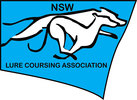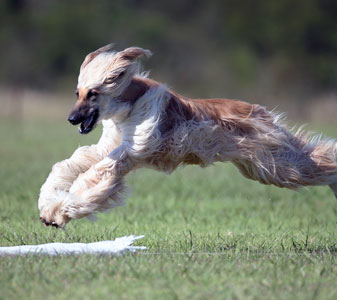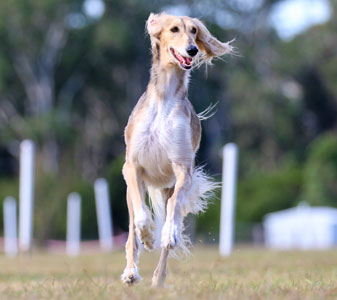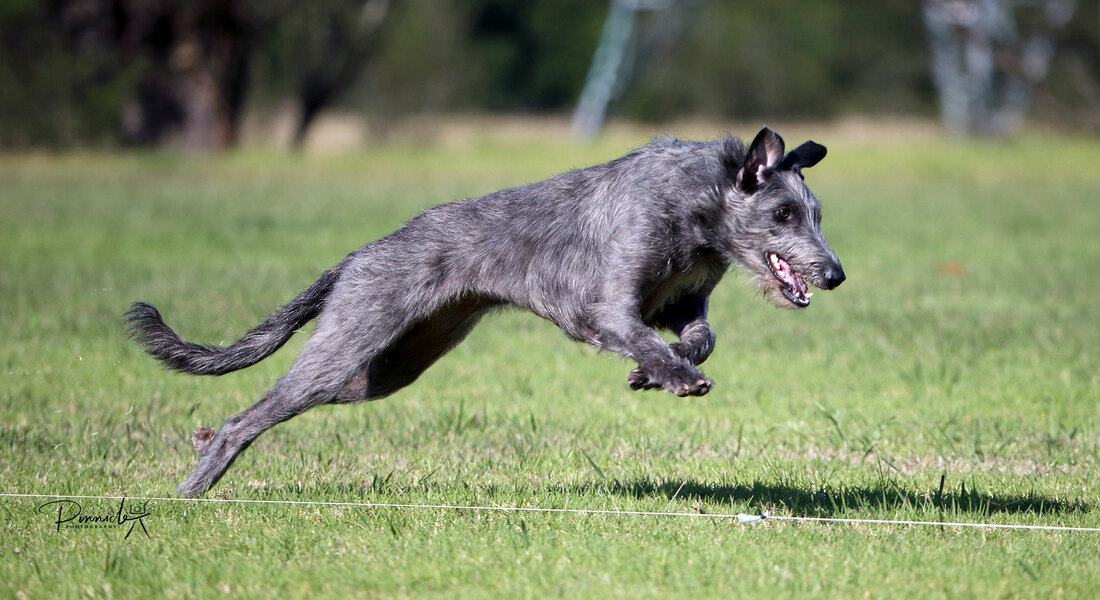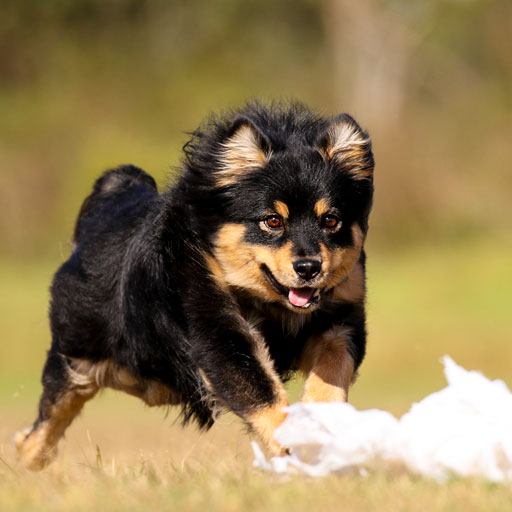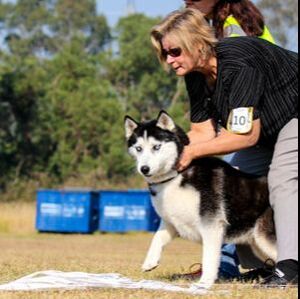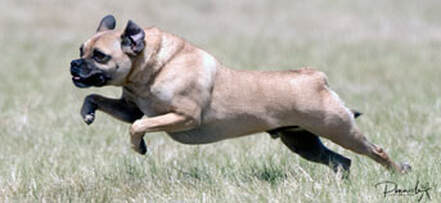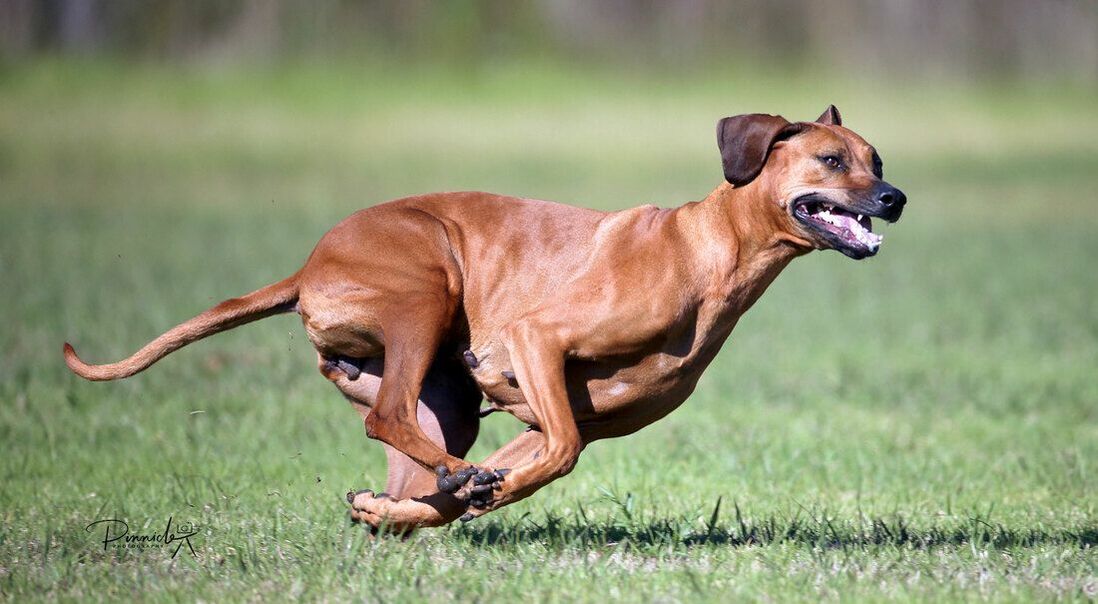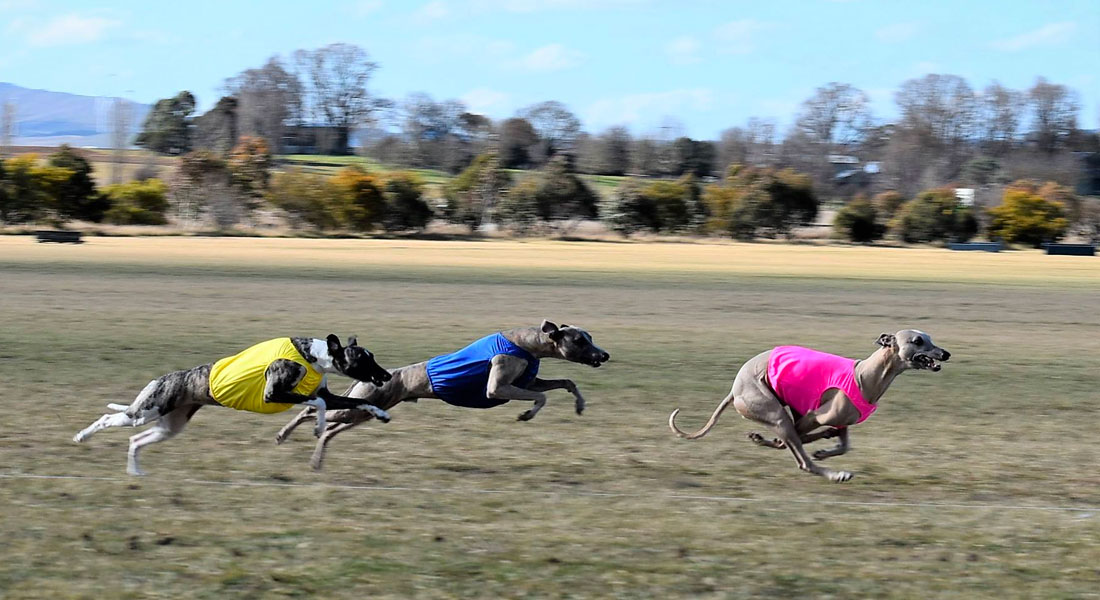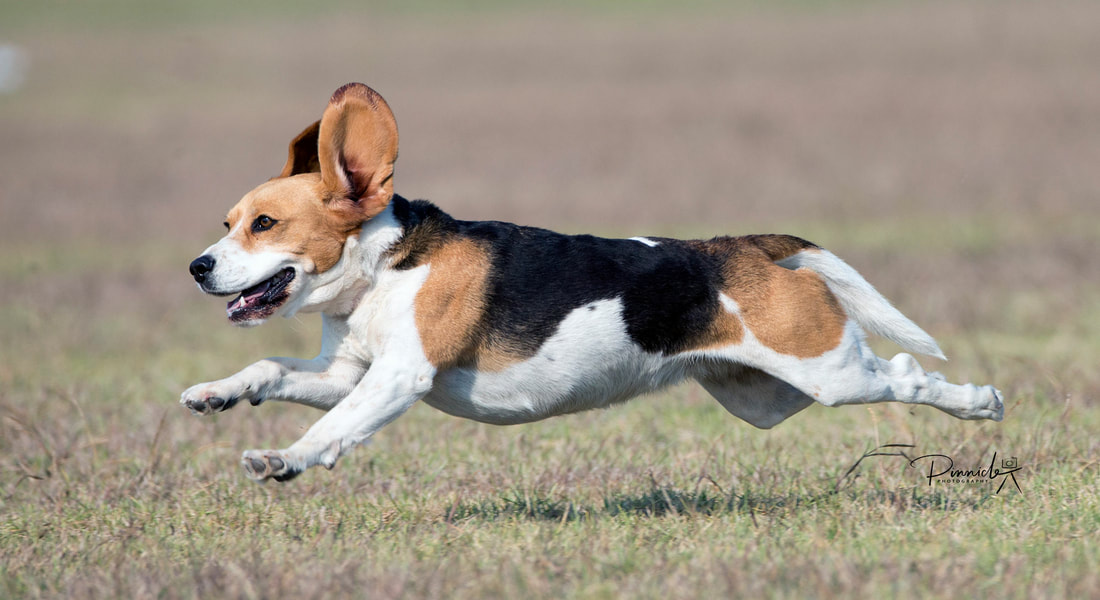|
Lure coursing is a performance sport developed in the early 1970s by sight hound fanciers who previously hunted jackrabbits in the open field. They invented lure coursing as a safer, more controlled sport for sighthounds that would recreate the physical requirements of open field coursing, allowing them to continue testing the functional abilities of their hounds.
Lure coursing aims to preserve and develop the coursing skills inherent in sighthounds and to demonstrate that they can perform the functions for which they were originally bred. The hounds chase plastic bags on a course laid out to simulate the movement of escaping game. The plastic bags are pulled around on a nylon string course, propelled by a hand controlled motor. A coursing dog should have the ability to course without showing signs of undue stress or lack of fitness. Coursing tests many aspects of a dog’s physical structure and temperament. As a consequence, dogs who participate in lure coursing need to be both sound and fit. Lure Coursing is open to all breeds and associate registered dogs over the age of 15 months. There are two streams with two separate sets of titles. |
Getting Started
If your dog is fit, injury free, confident enough to run around a paddock without you close by and has a good recall, the best way to start in the sport is to attend one of our events to see the lure coursing in action. Ideally, come along to a try out day and see if your dog enjoys the sport. If they do, and you would like to trial with your dog, the next step is to become a member of Dogs NSW (or another Dogs Australia state body) and register your dog with them. If your dog came from a Dogs Australia registered breeder, they will already be registered.
Once you are a Dogs NSW member and your dogs are registered, you can enter trials. For all dogs, the first level is Junior Courser (JC), though this is generally split into the Sighthounds stream for Dogs Australia registered Sighthounds and the Coursing Ability Test (CAT) stream for all other dogs.
Once you are a Dogs NSW member and your dogs are registered, you can enter trials. For all dogs, the first level is Junior Courser (JC), though this is generally split into the Sighthounds stream for Dogs Australia registered Sighthounds and the Coursing Ability Test (CAT) stream for all other dogs.
Registered Sighthounds
The Sighthound stream is for dogs who are registered with Dogs Australia as an Afghan Hound, Azawakh, Borzoi, Deerhound, Greyhound, Ibizan Hound, Irish Wolfhound, Italian Greyhound, Pharaoh Hound, Saluki, Sloughi, Whippet, Rhodesian Ridgeback or Basenji, though the rules allow for more Sighthound breeds to be added as they are recognised by Dogs Australia. Sighthounds first earn their junior courser title (JC) and then owners choose which stream they would like their hound to enter.
Open StakesOpen stakes requires the dog to prove that they are able to safely run with another dog of the same breed. They do this by first completing a Qualifying Course (QC). In open stakes they will be required to run with up to 2 other members of their breed and are awarded points towards their Field Champion (FCh) title, based on their placing against those dogs.
|
Single StakesSingle stakes allows those dogs who are not able to complete a QC, or those that may not enjoy running with other dogs to continue in the sport. Dogs running in single stakes are able to gain points towards a Singles Field Champion (sFCh) title. Dogs can run in Single Stakes and then later move into Open Stakes or Veteran Stakes if they achieve a QC.
|
Veteran StakesVeteran stakes is for dogs over the age of 7, or Irish Wolfhounds over the age of 5, as an alternative to open or single stakes. Dogs running in veteran stakes are able to gain points towards a Veteran Field Champion (vFCh) title. Like Open Stakes, Veteran Stakes requires the dog to run with other dogs and so the dog much achieve a QC prior to entering.
|
Basic Equipment for Sighthounds
To start with, all you will need is a flat collar and lead get your dog on and off the field as they can't run in any kind of collar, harness or head halter. Some people may choose to purchase a specially designed sighthound slip lead so they can "slip" (release) their dog but these aren't compulsory and most normal leads can be used as a slip lead if necessary. Of course, if you like buying leads, go ahead!
If you plan on running your Sighthound in Open or Veteran Stakes, once your dog has achieved their JC title, you will need to purchase “blankets” (racing jackets) in the recognised colours of blue, yellow and pink. At the start of the trial, a blanket draw will be completed, which dictates which colour your dog will be wearing for their runs.
While your Sighthound does not have to wear a muzzle unless they have been disqualified for interfering with or showing aggression to another hound in multi dog stakes, if you wish, you can choose to muzzle your dog.
At all lure coursing events and trials, your dog will also need to be securely contained (not tethered) unless they are warming up, cooling down or running, so you may also need to purchase a crate.
If you have any questions about equipment or suppliers, you can contact the NSWLCA committee for help.
If you plan on running your Sighthound in Open or Veteran Stakes, once your dog has achieved their JC title, you will need to purchase “blankets” (racing jackets) in the recognised colours of blue, yellow and pink. At the start of the trial, a blanket draw will be completed, which dictates which colour your dog will be wearing for their runs.
While your Sighthound does not have to wear a muzzle unless they have been disqualified for interfering with or showing aggression to another hound in multi dog stakes, if you wish, you can choose to muzzle your dog.
At all lure coursing events and trials, your dog will also need to be securely contained (not tethered) unless they are warming up, cooling down or running, so you may also need to purchase a crate.
If you have any questions about equipment or suppliers, you can contact the NSWLCA committee for help.
Coursing Ability Test
|
The Coursing Ability stream is open to all other registered breeds and associate register dogs, including associate registered sighthounds.
Dogs first enter Junior Courser (JC) and once qualified, enter the coursing ability test (CAT). CAT dogs are eligible for Coursing Ability (CA), Coursing Ability Advanced (CAA) and Coursing Ability Excellent (CAX) titles. |
Basic Equipment for CAT Dogs
To start with, all you will need is a collar and lead or a slip lead to get your dog on and off the field as all dogs must run "naked" (without a collar, harness or head halter). Depending on your dog and the way you would like to release them for their run, you may choose to buy a slip lead to "slip" your dog with.
At all lure coursing events and trials, your dog will also need to be securely contained (not tethered) unless they are warming up, cooling down or running so we recommend that you purchase a metal crate.
If you have any questions about equipment or suppliers, you can contact the NSWLCA committee for help.
At all lure coursing events and trials, your dog will also need to be securely contained (not tethered) unless they are warming up, cooling down or running so we recommend that you purchase a metal crate.
If you have any questions about equipment or suppliers, you can contact the NSWLCA committee for help.
Lure Coursing Trial FAQs
How long does a trial day go for?
Trials usually start at 9am, and you will need to be there before this time to check in any dogs you have entered. You can expect to be finished around 4pm, although this can vary based on how many dogs have entered, and how many have qualified for a second run on the day.
How many runs does each dog do in a trial?
Your dog will need to complete two runs of up to 900m at a trial, with the second run usually a reversed course of the first run. Dogs who have scored a pass mark in the first run will be allowed to enter the second run. Obviously whether you allow your dog a second run will also depend on the dog’s fitness and the conditions on the day. On occasion, due to weather or other unforeseen circumstances, there may only be a single run held for the trial. In this case, the scoring from the first run may be doubled to generate the total score for the trial.
Can bitches in season compete?
No. Bitches in season are not permitted on the trial grounds.
Can I see the course map before the trial?
There are several reasons why course maps aren't made available before the trial but main reason is that the course layout is often changed as its being laid out. Measurements and angles are not always 100% accurate and since courses are often designed in programs like Google Earth, they don't take current ground conditions into account. The weather, landscape and vegetation can all cause courses to be drastically altered as they're being set up and there have even been special cases where courses have had to be changed due to the gear malfunctioning (eg, the ground being soft so the pulleys come out of the ground easily). It would not be fair to competitors who made the decision not to enter based on the course design provided if it was then changed on the day.
Will I be able to see my dogs' Marks/scores?
During the day, competitors can access their dog's first and second run scores on the club's whiteboard. For dogs entered into either Junior Courser or the Qualifying Course, scores will be listed as pass or fail. If two judges are judging the same runs, the score on this board is an average of both judges' scores, as it will be on your Dogs Australia qualification certificate.
© COPYRIGHT 2022 ALL RIGHTS RESERVED.
The NSWLCA would like to thank the photographers, Pinnicle Photography, Ffire Photography and MG Studios who allowed us the use of their photos for this website.
The NSWLCA would like to thank the photographers, Pinnicle Photography, Ffire Photography and MG Studios who allowed us the use of their photos for this website.
